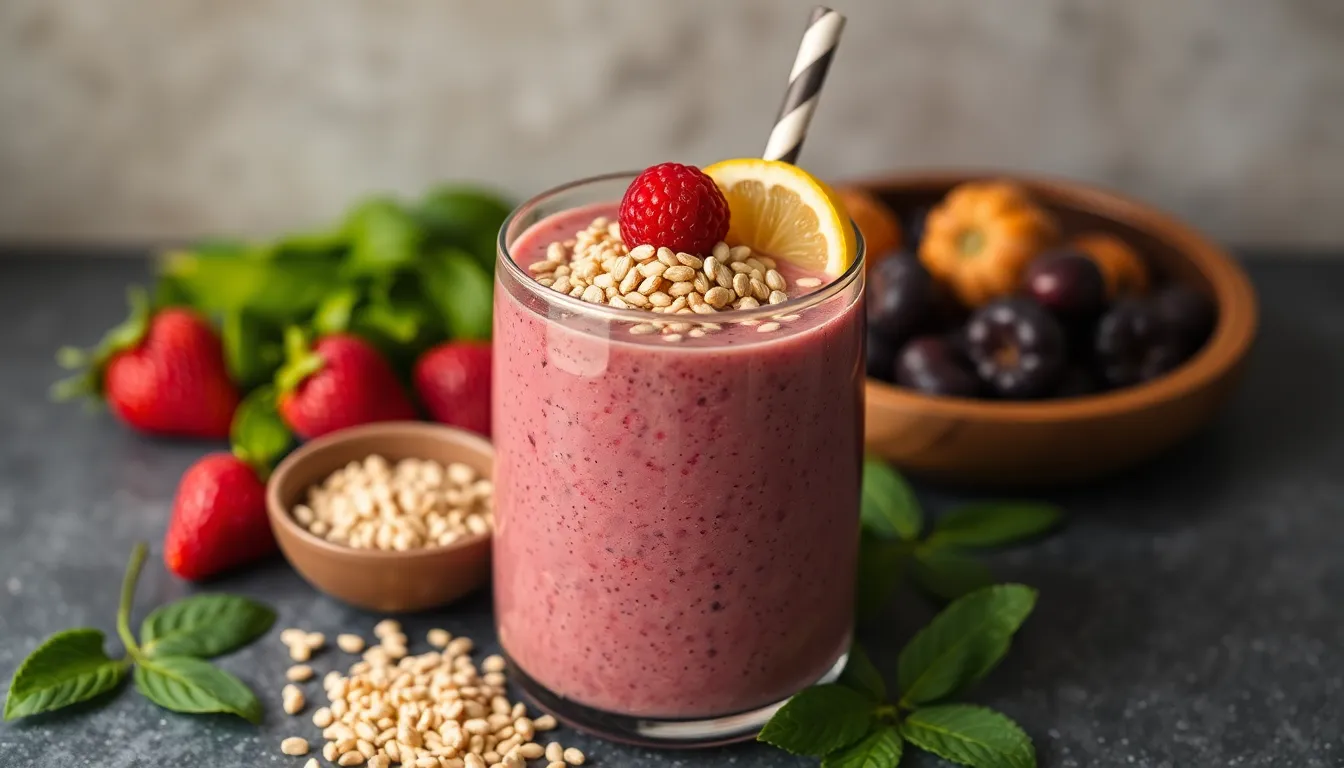The Benefits of Using Whole Grains in Your Smoothies
In recent years, smoothies have surged in popularity, becoming a quick and convenient way to pack essential nutrients into one delicious drink. From busy mornings to post-workout refuels, smoothies are an ideal canvas for health-conscious individuals looking to boost their nutrition. However, many smoothie enthusiasts overlook one essential ingredient that can elevate their drink from ordinary to extraordinary: whole grains.
Whole grains offer a plethora of health benefits that can transform your smoothie into a powerhouse of nutrition. In this article, we will explore what whole grains are, their nutritional profiles, the health benefits they provide, and how to incorporate them effectively into your smoothie recipes.
Section 1: What Are Whole Grains?
Whole grains are grains that contain all three parts of the grain kernel: the bran, germ, and endosperm. Unlike refined grains, which have been stripped of these nutritious components during processing, whole grains retain their natural richness and provide a multitude of health benefits.
Some popular examples of whole grains include:
- Oats
- Quinoa
- Brown rice
- Barley
Each of these grains comes packed with essential nutrients, including vitamins, minerals, and fiber, making them excellent additions to smoothies.
Nutritional Profile of Whole Grains
| Whole Grain | Calories | Fiber (g) | Protein (g) | Key Vitamins |
|---|---|---|---|---|
| Oats | 389 | 10.6 | 16.9 | B-vitamins, Iron |
| Quinoa | 368 | 2.8 | 14.1 | B-vitamins, Magnesium |
| Brown Rice | 218 | 3.5 | 5.0 | B-vitamins, Selenium |
| Barley | 352 | 17.3 | 12.5 | B-vitamins, Iron |
Section 2: Health Benefits of Whole Grains in Smoothies
Subsection 2.1: Improved Digestive Health
The high fiber content in whole grains plays a vital role in promoting digestive health. Fiber adds bulk to the diet, making it easier for food to pass through the digestive system. A diet rich in fiber can help prevent constipation and reduce the risk of digestive disorders.
It is recommended that adults consume at least 25-30 grams of fiber per day. Adding whole grains to your smoothies can significantly contribute to this recommended intake.
Subsection 2.2: Sustained Energy Levels
Whole grains are a fantastic source of complex carbohydrates, which provide a steady release of energy. This is in contrast to refined grains, which can lead to spikes and crashes in blood sugar levels.
Including whole grains in your smoothies can help you feel fuller longer and maintain your energy levels throughout the day, making them an excellent choice for breakfast or post-exercise refueling.
Subsection 2.3: Heart Health Benefits
Research has shown that incorporating whole grains into your diet can lead to better heart health. Whole grains help reduce cholesterol levels, lower blood pressure, and decrease the risk of heart disease. Their rich antioxidant and anti-inflammatory properties also contribute to overall cardiovascular health.
Subsection 2.4: Weight Management
Whole grains can be beneficial for weight management due to their high fiber content, which promotes feelings of satiety and fullness. This can help prevent overeating and aid in weight loss efforts.
By incorporating whole grains into your smoothies, you can create a nutritious, filling meal replacement that supports your weight management goals.
Section 3: How to Incorporate Whole Grains into Your Smoothies
Subsection 3.1: Choosing the Right Whole Grains
When it comes to smoothies, some whole grains work better than others. Here are some recommendations:
- Oats: Known for their creamy texture, oats blend seamlessly into smoothies and add a delicious nutty flavor.
- Quinoa: Packed with protein, quinoa adds a subtle nuttiness and can be used cooked or in flour form.
- Brown Rice: Brown rice can be blended in for a more substantial smoothie, providing an earthy flavor.
- Barley: Barley adds a distinct taste and is rich in fiber, perfect for hearty smoothies.
Subsection 3.2: Tips for Preparation
To make whole grains smoother and easier to blend, consider the following tips:
- Soaking: Soak oats or quinoa for a few hours or overnight to soften them and improve blending.
- Cooking: Cook grains like brown rice or barley before adding them to your smoothies for a smoother texture.
Subsection 3.3: Recipe Ideas
Here are some simple smoothie recipes that incorporate whole grains:
| Recipe Name | Main Ingredients | Preparation Time | Health Benefits |
|---|---|---|---|
| Creamy Oat Banana | Oats, Banana, Almond Milk | 5 minutes | High fiber, sustained energy |
| Quinoa Berry Blast | Quinoa, Mixed Berries, Greek Yogurt | 7 minutes | Protein-rich, antioxidant-packed |
| Chocolate Brown Rice Delight | Brown Rice, Cocoa Powder, Banana | 5 minutes | Rich in fiber, delicious chocolate flavor |
| Barley Green Smoothie | Barley, Spinach, Apple, Ginger | 6 minutes | High in vitamins, refreshing taste |
Conclusion
Incorporating whole grains into your smoothies not only enhances their nutritional value but also contributes to your overall health and well-being. With their impressive fiber content, sustained energy release, heart health benefits, and support for weight management, whole grains are a powerhouse ingredient that should not be overlooked.
Experimenting with different whole grains can lead to unique flavors and textures in your smoothies, allowing you to personalize your recipes to suit your taste preferences. Start blending whole grains today and discover the difference they can make to your smoothie game!




